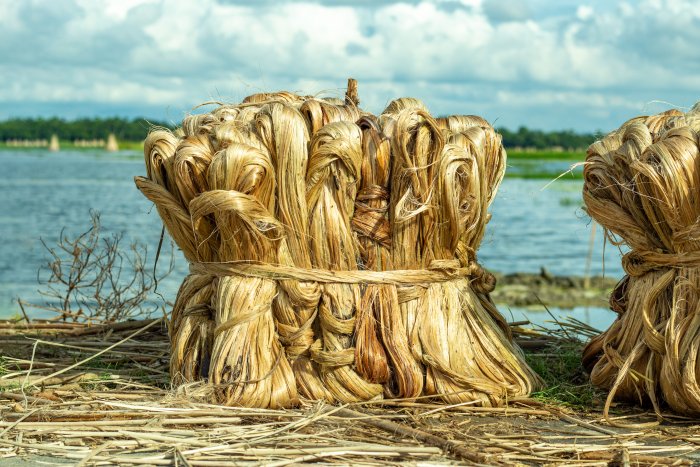This Is One Of The Oldest Pieces Of Cloth In The World And It’s Made Of Bast Fibers!
Archaeological discoveries provide us with vital information about the daily life of our ancestors. What did ancient people eat and drink, and what kind of clothes did they wear? These are some of the many questions occupying the minds of those interested in ancient history.
Scientists have discovered incredible textiles that have survived for thousands of years and can now be analyzed with the help of modern technology.

At La Marmotta near Rome, Italy, underwater archaeologists found rare and well-preserved cloth fragments produced by people more than 8,000 years ago. Scientists are especially impressed with four extraordinary small textile fragments that researchers at the University of Copenhagen are currently analyzing. The Neolithic textiles were most likely made of plant fibers.
While excavating at Giza, Egypt, archaeologists discovered the only complete ancient Egyptian bead-net dress found to date in one of the tombs!
The 4,500-year-old dress was comprised of “several thousand faience beads divided among thirty small, rounds boxes of varied sizes, none larger than five inches in diameter.”
“This individual was wrapped, each limb individually, to simulate a living person, and covering her was the front half of a narrow V-necked sheath. Our final bead-net reconstruction produced, therefore, not a shroud-like mummy covering, but rather a dress that simulated a garment actually worn in life,” Millicent Jick at the Museum of Fine Arts in Boston said.
Another incredible Egyptian discovery is the Tarkhan Dress, a V-neck linen shirt that has been confirmed as the world’s oldest woven garment, with radiocarbon testing dating the garment to the late fourth millennium B.C.
Glacial archaeologists have also successfully recovered amazing clothes and shoes that have been buried under the ice in Norway for a very long time. At the Lendbreen, a pass high in the Norwegian mountains, scientists found two complete pieces of clothing. One of them is a 1,700-year-old tunic.
The Lendbreen tunic is Norway’s oldest piece of clothing, and despite being hidden beneath the snow for so many years, it’s still very well-preserved.
One of the world’s oldest pieces of cloth was unearthed in Çatalhöyük, Turkey. This archaeological discovery of Stone Age textiles sheds new light on the history of clothes making.
Çatalhöyük, is the world’s largest known Stone Age settlement and one of the most famous archaeological sites. As many as 10,000 people lived in Çatalhöyük in Turkey some 8,000-9,000 years ago. This makes it the largest known settlement from what archaeologists call the Neolithic and Chalcolithic periods.
Ever since the first discovery of pieces of cloth unearthed at the site, experts have been discussing what kind of clothes people wore in Çatalhöyük. Some specialists believed that people made their clothes from wool. Others thought they made them out of linen instead. So who’s right? Neither, actually.

As explained by Bender Jørgensen, a specialist in archaeological textiles and Professor emerita from NTNU’s Department of Historical and Classical Studies, “In the past, researchers largely neglected the possibility that the fabric fibers could be anything other than wool or linen, but lately another material has received more attention.”
People in Çatalhöyük used assorted varieties of exactly this material.
“Bast fibers were used for thousands of years to make rope, thread, and in turn also yarn and cloth,” says Bender Jørgensen.
As it turns out, people in this area did not import linen from elsewhere, as many researchers have previously thought, but used the resources they had plentiful access to.
Bender Jørgensen notes that a lot of people often overlook bast fiber as an early material. “Linen tends to dominate the discussion about the types of fabric fibers people used,” she says.

Ancient civilizations were resourceful and highly creative. Producing textiles made of bast fibers had several advantages. Bast fiber is found between the bark and the wood in trees such as willow, oak, or linden. The people from Catalhöyük used oak bark and thus fashioned their clothes from the bark of trees that they found in their surroundings.